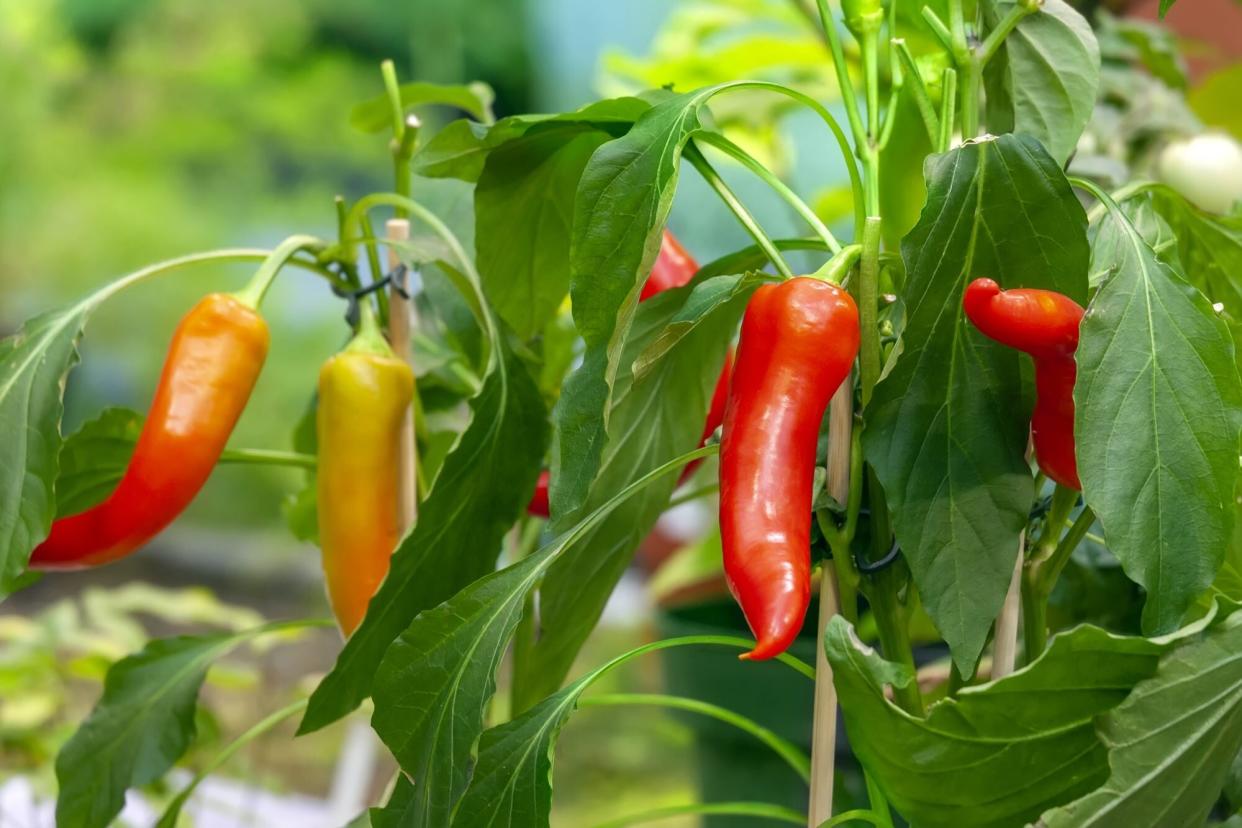How To Prune Pepper Plants

Getty Images
TABLE OF CONTENTS
On This Page
Why Prune Pepper Plants
When To Prune Pepper Plants
How To Prune Pepper Plants
Theories abound as to best practices for growing vegetables—and one topic open for debate is whether or not to prune pepper plants. While it is not necessary to prune peppers, there certainly are benefits to doing so. Learn why pruning improves plant health and yields, and how to prune pepper plants to reap those benefits.
Why Prune Pepper Plants
The main reasons for pruning peppers are to improve branching, establish healthier roots, and ripen late-season fruits. When we remove plant material through pruning, we alter the growth pattern of plants. For example, early season tip pruning causes plants to branch, resulting in a stouter plant with stronger stems that can better withstand wind. Higher branching also leads to more fruit production later in the season. Pruning cuts produce different results at different stages in plant development, so it is important to begin by understanding the proper timing for pruning peppers.
When To Prune Peppers
There are two primary timeframes for pruning peppers: during the establishment period in spring, and late in the season when the threat of frost closes in. Our goals for pruning at these two times are quite different. Early season pruning is done to accomplish three things: establishing a strong branch structure, encourage root development, and manage disease. Late season pruning is done to hasten fruit ripening when frost threatens. Let's look at how to prune pepper plants to accomplish each of these goals.
How To Prune Pepper Plants
The pruning basics are the same regardless of timing. Use a clean, sharp hand-pruner and make cuts just above a branch or leaf node. It is important to keep pruning tools sanitized between plants to prevent the spread of disease. Disinfect tools easily by dipping them in a 10% bleach solution. When pruning, discard any diseased material in the trash rather than the compost.
Early-Season Pruning
Most gardeners grow pepper plants from transplants purchased at the store. Early-season pruning during the establishment phase occurs at the time of transplanting and during the first few weeks after transplants are moved to the garden.
Establishing Branch Structure
During the establishment phase, pepper plants direct their energy into developing roots as well as growing leaves and branches. Many pepper transplants have a single, long stem that is often quite weak due to growing indoors. When plants are about 12-inches tall, cut or pinch the stem of smaller pepper varieties like jalapeno, shishito, and Thai back to the second or third set of leaves. This is called topping or tip pruning. The plants respond by sending out branches along the stem, resulting in a fuller, stronger plant.
Tipping is less important for larger varieties such as bell, cubanelle, and poblano peppers, which tend to develop a strong Y-shaped branching pattern. For these varieties, identify the strong stems forming a Y—this will be the main structure of the plant. Prune away any smaller branches or suckers, taking care to not to damage the main Y-shaped branches.
Root Development
Remember that young plants are also setting down roots. You can encourage healthier root development by removing the first flush of flowers. This allows plants to put energy into establishing an extensive root system rather than focusing that energy on fruit production. This may seem counterintuitive, but healthy roots will lead to higher yields through the course of the season.
Disease Control
Finally, maintain good air circulation and manage disease by thinning lower leaves just like you do with tomatoes, a process often referred to as bottom pruning. When plants are about two feet tall, prune out the foliage from the bottom 12" of larger pepper varieties like bell, cubanelle, and poblano peppers. For smaller varieties such as jalapeno, shishito, and Thai peppers, remove foliage from the lower 6-8" of stems. Removing the lower leaves helps prevent plant diseases by reducing the chance of soil-borne pathogens from splashing onto foliage.
Late-Season Pruning
Aside from the occasional removal of suckers throughout the summer, peppers require very little pruning beyond establishment. However, depending on your climate, you may need to prune late in the season to encourage any remaining fruits on the plant to ripen when cold weather approaches. Peppers are tender plants and quite susceptible to frost, so it is important to harvest fruit before the first frost.
Peppers take a long time to ripen, especially those that develop color. While any pepper can be eaten in the green stage, the flavor of many varieties doesn't fully develop until the fruit color matures. As fall approaches, encourage fruit to ripen by removing foliage shading the fruits. This allows the heat of the sun to reach developing peppers.
More severe pruning about three to four weeks before the first expected frost forces remaining fruits to ripen. Prune plants heavily by cutting all shoots and side branches back by about six inches, or to a point just above the topmost fruit. Remove branches that do not hold any fruits. Finally, remove any flowers you see on the plant as well as small fruits that do not have time to ripen before the first frost. This redirects the plant's energy into only those fruits that have a chance of maturing.

